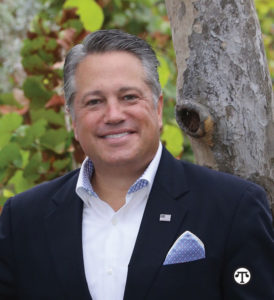(NAPSI)—Florida has now sustained 117 direct hits by hurricanes in recorded history, according to the National Oceanic and Atmospheric Administration. This is almost twice as many major storms as the runner-up state of Texas.
In fact, in Florida’s annual hurricane season, which runs from June through November, residents can anticipate tropical storm and hurricane warnings for all or parts of the state.
From the effects of Hurricane Andrew in 1992, to more recent Hurricanes Maria and Irma, we’ve been here before—and, sadly, know all too well the aftermath that comes with them.
Floridians typically expect the storms to hit somewhere along the Sunshine State’s 1,350-mile shoreline, but how prepared are their homes, offices and other buildings to withstand the potential damage? Not very, it seems.
In a survey commissioned by the National Hurricane Survival Initiative, more than half of Floridians said they were caught unprepared in at least one way—ranging from lack of window protection to absence of an evacuation plan—leading up to Hurricane Irma’s detrimental landfall last year.
Busy hurricane seasons—such as that of 2017, which left Florida battered—are the “new normal,” says former FEMA Director Craig Fugate. Add to the fact that hurricanes leave states and local jurisdictions with billions in recovery costs and the result is debilitating for Florida.
In response, nearly a dozen organizations, including the FAIR Foundation, International Hurricane Research Center, National Emergency Management Association, and Salvation Army, have recently come together to launch “Get Ready, Florida!”—an awareness campaign to educate and encourage Floridians to take the necessary steps to protect their most valuable assets—their homes and families—in advance of the upcoming hurricane season.
The data tell us this proactive approach makes economic sense. Research by the FAIR Foundation shows that for every $1 invested in mitigation, the state avoids $4 or more in post-hurricane spending.
One way “Get Ready, Florida!” recommends residents prepare is through hurricane protection improvements and retrofits to their homes. Partnering with the campaign on this effort is Ygrene, an energy efficiency and resiliency finance company in Florida helping residents make these improvement projects faster, easier and more affordable through its Property Assessed Clean Energy (PACE) program.
PACE financing provides a long-term, low-rate financing option for consumers who otherwise would be forced to turn to short-term, high-rate financing. It enables Florida homeowners to save on home improvements and hurricane protection projects such as impact-resistant windows and doors, roofing, HVAC and solar panels. These retrofits significantly improve a building’s resilience to even the strongest of storms.
As the survey findings from the National Hurricane Survival Initiative have shown, however, there are still thousands of Floridians who need help preparing for future hurricane seasons. In fact, according to the survey, while fewer than 8 percent of Floridians said they were aware of the PACE program, the majority—53 percent—said they would be interested in such a program.
In the wake of Hurricane Irma, Florida residents need every resource available—from affordable home-hardening improvements, proper insurance coverage, and a well-devised preparedness plan—to prevent avoidable losses before, during and after catastrophic events.
“Get Ready, Florida!” is a worthy effort to help Florida residents protect their property and loved ones from severe storms, and to create a more resilient future for Florida’s communities and beyond.
Learn More
Visit www.hurricanesafety.org for tips on hurricane preparedness and for more information on the “Get Ready, Florida!” campaign.
- Chip LaMarca is the Broward County Commissioner in Florida.

